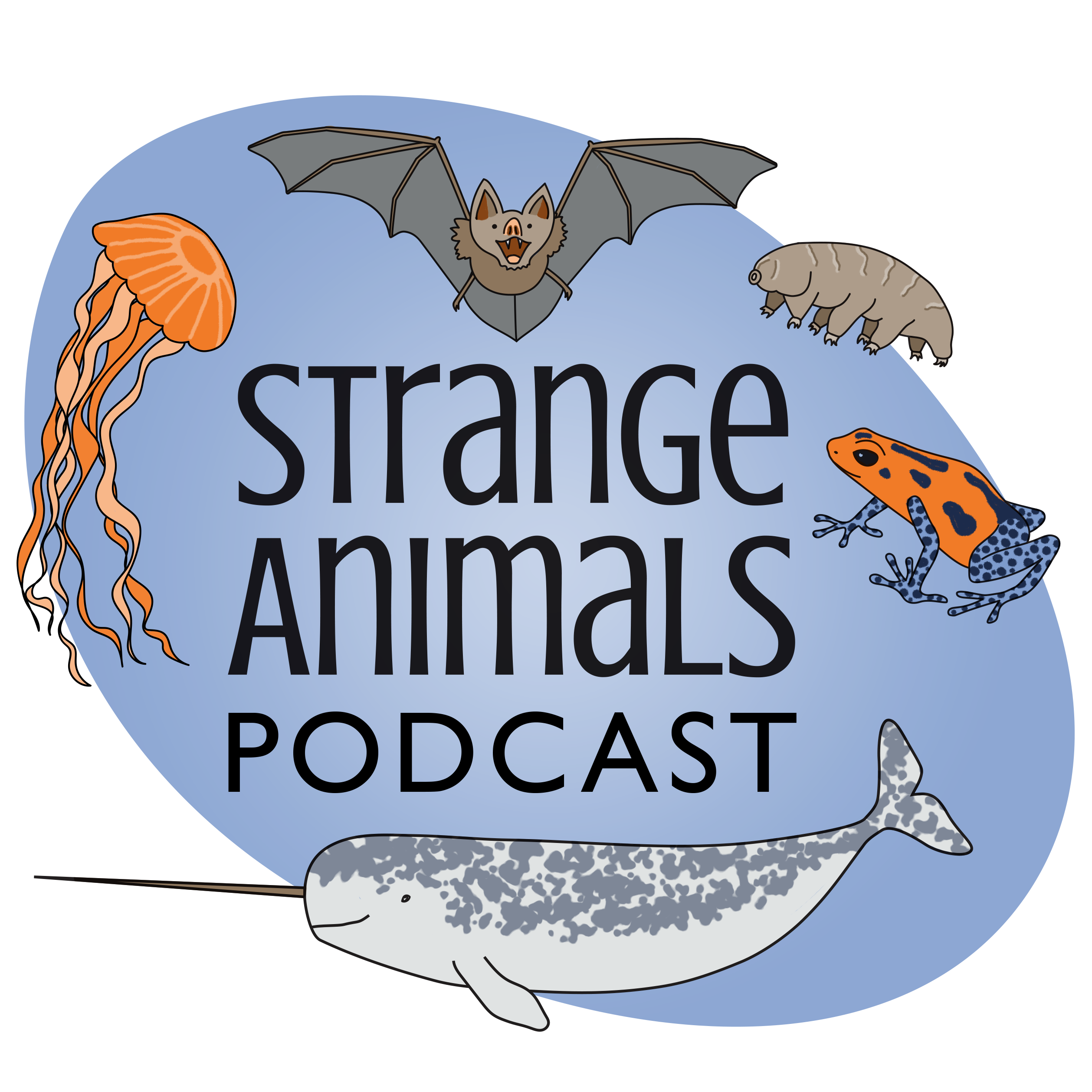Episode 341: The Leaf Sheep and the Mold Pig

Thanks to Murilo and an anonymous listener for their suggestions this week!\n\nFurther reading:\n\nThe \u2018sheep\u2019 that can photosynthesize\n\nMeet the \u2018mold pigs,\u2019 a new group of invertebrates from 30 million years ago\n\nA leaf sheep:\n\n\n\nShaun the sheep:\n\n\n\nA mold pig:\n\n\n\nShow transcript:\nWelcome to Strange Animals Podcast. I\u2019m your host, Kate Shaw.\nThis week let\u2019s learn about two animals that sound like you\u2019d find them on a farm, but they\u2019re much different than their names imply. Thanks to Murilo for suggesting the leaf sheep, which is where we\u2019ll start.\nThe leaf sheep isn\u2019t a sheep or a leaf. It\u2019s actually a type of sea slug that lives in tropical waters near Japan and throughout much of coastal south Asia. The reason it\u2019s called a leaf sheep is because it actually looks a lot like a tiny cartoon sheep covered with green leaves instead of wool.\nBack in episode 215 we talked about the sea bunny, which is another type of sea slug although it\u2019s not closely related to the leaf sheep. The leaf sheep is even smaller than the sea bunny, which can grow up to an inch long, or about 25 mm. The leaf sheep only grows about 10 mm long at most, which explains why it wasn\u2019t discovered until 1993. No one noticed it.\nThe leaf sheep\u2019s face is white or pale yellow with two tiny black dots for eyes set close together, which kind of makes it look like Shaun the Sheep. It also has two black-tipped protuberances that look like ears, although they\u2019re actually chemoreceptors called rhinophores. The rest of its body is covered with leaf-shaped spines called cerata, which are green and often tipped with pink, white, or black. This helps disguise it as a plant, but there\u2019s another reason why it\u2019s green.\nThe leaf sheep eats a particular kind of algae called Avrainvillea, which looks like moss or fuzzy carpet. While algae aren\u2019t exactly plants or animals, many do photosynthesize like plants. In other words, they transform sunlight into energy to keep them alive. In order to photosynthesize, a plant or algae uses a special pigment called chlorophyll that makes up part of a chloroplast in its cells, which happens to be green.\nThe leaf sheep eats the algae, but it doesn\u2019t digest the chloroplasts. Instead, it absorbs them into its own body and uses them for photosynthesis. That way it gets nutrients from eating and digesting algae and it gets extra energy from sunlight. This is a trait shared by other sea slugs in the superorder Sacoglossa. Because they need sunlight for photosynthesis, they live in shallow water, often near coral reefs.\nWhen the leaf sheep\u2019s eggs hatch, the larvae have shells, but as they mature they shed their shells.\nThis is a good place to talk about cyanobacteria, which was requested ages ago by an anonymous listener. Cyanobacteria mostly live in water and are also called blue-green algae, even though they\u2019re not actually classified as algae. They\u2019re considered bacteria, although not every scientist agrees. Some are unicellular, meaning they just consist of one cell, while others are multicellular like plants and animals, which means they have multiple cells specialized for different functions. Some other cyanobacteria group together in colonies. So basically, cyanobacteria looked at the chart of possible life forms and said, \u201cyes, thanks, we\u2019ll take some of everything.\u201d That\u2019s why it\u2019s so hard to classify them.\nCyanobacteria photosynthesize, and they\u2019ve been doing so for far longer than plants--possibly as much as 2.7 billion years, although scientists think cyanobacteria originally evolved around 3.5 billion years ago. The earth is about 4.5 billion years old and plants didn\u2019t evolve until about 700 million years ago.\nLike most plants also do, cyanobacteria produce oxygen as part of the photosynthetic process, and when they started doing so around 2.7 billion years ago, they changed the entire world. Before then, earth\u2019s atmosphere hardly contained any oxygen. If you had a time machine and went back to more tha...